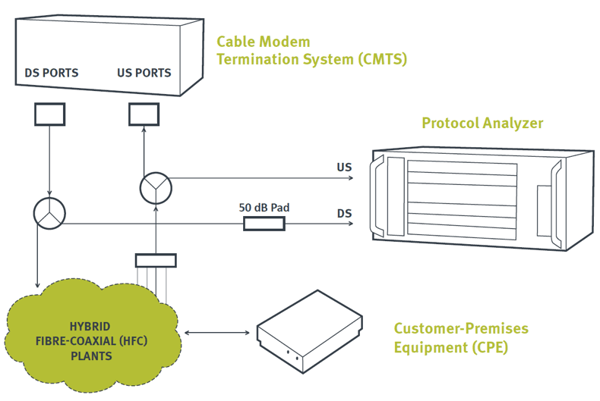As many organizations begin designing, evaluating or deploying DOCSIS 3.1 equipment, they also have to consider the tools they will need to ensure effective integration and interoperation of that equipment, as well as the health of the evolving cable networks themselves. A very useful tool for this purpose is a real-time, non-intrusive protocol analyzer, sometimes called a packet sniffer, which is used to quickly find, analyze and correct trouble spots.
This article will be of interest to multiple system operators (MSOs), chipset/CMTS vendors, OEMs, ODMs and certification bodies, because protocol analysis can enable these organizations to better understand the operation and performance of their DOCSIS 3.1 equipment and/or networks. And protocol analysis is especially important as new services and equipment begin delivering much more bandwidth and speed, opening the door to offerings such as Over The Top (OTT) video, 4K video, and 3DTV.
What Is Protocol Analysis?
At a basic level, network operators, for example, use protocol analyzers/packet sniffers to capture packets and decode them into their component parts, especially for troubleshooting communication issues. Protocol analyzers can also be surprisingly useful in many aspects of network and equipment management, such as:
- Troubleshooting real-time outage and service interruptions
- Analyzing and debugging strange network behavior
- Producing real-time and historical statistics and measurements
- Testing and validating lab equipment
A Non-Intrusive Solution for Monitoring Network Health
The following figure illustrates how a protocol analyzer can be inserted in a network to act as a non-intrusive observer of upstream (US) and downstream (DS) DOCSIS communication between the cable modem termination system (CMTS) and customer premises equipment (CPE) such as modems and set-top boxes.

A Protocol Analyzer on a DOCSIS Network
Keeping Pace with Evolving Cable Networks
For the past few decades, protocol analysis tools have proven to be effective solutions for debugging and resolving network issues. But due to the changing nature of networks and technology, next-gen protocol analyzers need to be even more powerful and flexible for a wide range of needs and applications such as:
- Verifying RF parameters
- Validating MAC-level communication
- Performing real-time demodulation
- Triggering certain messages or MAC addresses
- Recording communication packets
- Supporting multiple protocol standards
To learn more, download an in-depth article entitled OPTIMIZING DOCSIS 3.1 NETWORKS: The Benefits of Protocol Analysis.